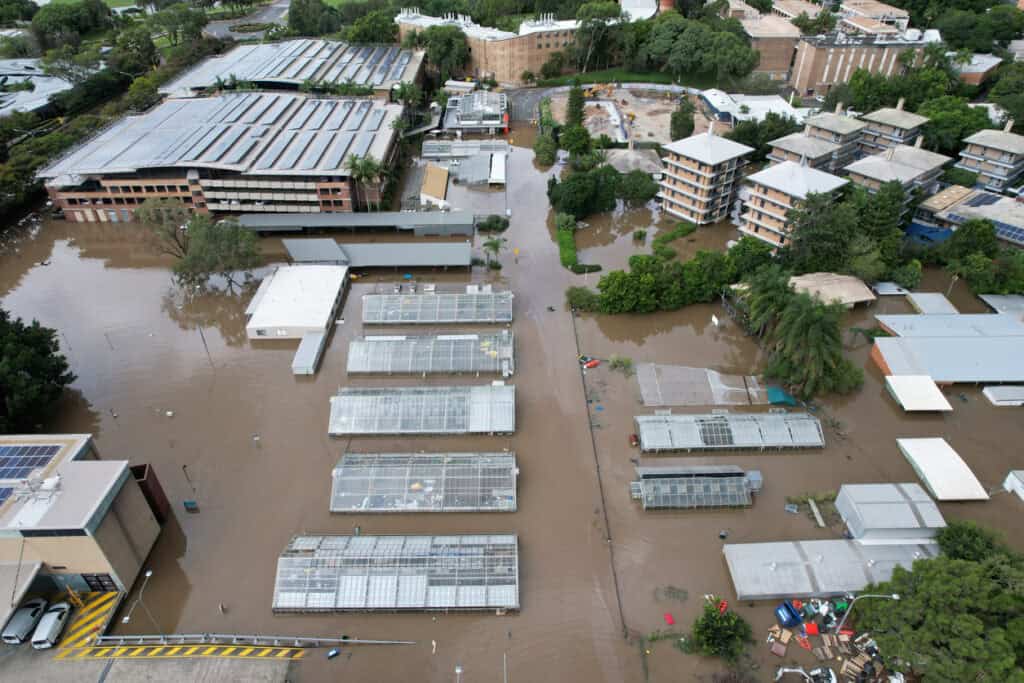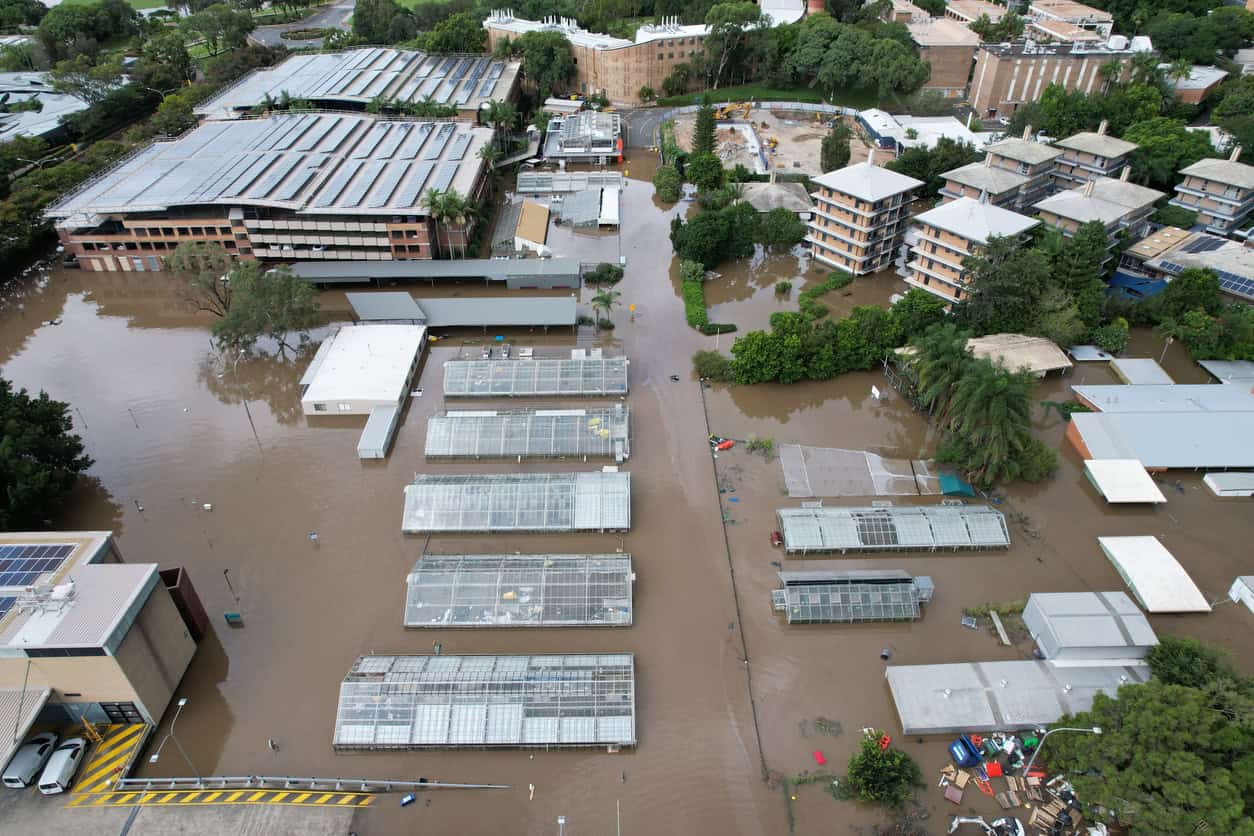When disaster strikes, the difference between prolonged disruption and business continuity often comes down to one thing: preparation. For facilities managers across Australia, disaster recovery planning isn’t just a checklist item, it’s a strategic imperative.
From bushfires and floods to power outages, cyber-attacks, and unexpected equipment failure, the potential risks to your facility are diverse and growing. This guide unpacks how to build an effective disaster recovery plan (DRP) tailored to Australian commercial facilities, including risk assessments, mitigation strategies, and practical tips to keep your building safe, compliant, and operational.
Table of Contents
Toggle1. Why Disaster Recovery Planning Matters in Facilities Management
Disasters don’t always arrive with a warning. Facilities managers are increasingly responsible not just for maintenance and compliance, but also for business continuity. Proactive disaster recovery planning minimises downtime, ensures the safety of people and assets, and helps meet regulatory obligations.
“Being prepared is more than just ticking boxes, it’s about protecting people, assets, and your organisation’s reputation.” — Jarrod Keogh, General Manager, JKFM.
In sectors like healthcare, education, retail, manufacturing, and warehousing, disaster recovery readiness directly impacts service delivery and financial outcomes.
2. Common Threats to Australian Facilities
Australian businesses face a unique blend of natural and man-made threats:
In rural and peri-urban regions, bushfires can severely damage infrastructure, cut off access routes, and endanger lives. It’s vital for facilities in fire-prone zones to have an evacuation and smoke-control strategy in place.
From heavy rainfall to cyclones, flooding can damage electrical systems, shut down HVAC units, and disrupt operations for days. Facilities should assess elevation, drainage, and sealant integrity regularly.
Outages can occur from storms, grid failure, or even human error. Power loss can halt operations, impact refrigeration or ventilation, and increase safety risks for occupants.
With IoT and BMS technology on the rise, facilities are more exposed to cybersecurity threats. Hackers targeting HVAC or access systems can lead to major operational and safety concerns.
Critical equipment such as lifts, generators, or chillers may fail without warning, particularly if maintenance is inconsistent. These failures can pose risks and cause significant disruption.
Unintentional errors or deliberate acts from internal or external individuals can cause equipment damage or security breaches.
Events like COVID-19 highlighted the need for hygienic spaces, flexible occupancy policies, and rapid cleaning protocols.
3. Key Components of Effective Disaster Recovery Planning
A well-rounded DRP for facilities should include:
Outline the immediate steps to protect life and property in the first minutes and hours after an incident. This could include evacuation protocols, fire warden roles, and emergency services contacts.
Define how operations will continue during and after a disaster. For example, can staff work remotely? Can core functions operate from an alternative site?
Outages can occur from storms, grid failure, or even human error. Power loss can halt operations, impact refrigeration or ventilation, and increase safety risks for occupants.
Establish clear lines of communication for notifying staff, tenants, contractors, and stakeholders. Include templates for emergency SMS, emails, or intranet updates.
Regularly test your team’s preparedness with drills, tabletop scenarios, and system testing to identify gaps and build confidence.
Keep records of inspections, drills, and corrective actions. These help demonstrate due diligence and can be critical during insurance or regulator reviews.
4. How to Conduct a Risk Assessment
Risk assessment is the foundation of disaster planning. Here’s how to approach it:
- Identify threats: Start by listing every potential disruption relevant to your facility’s location, industry, and operations. This includes environmental, technical, health, and security risks.
- Assess impact: Consider the consequences of each threat. Would it shut down operations, harm occupants, or damage assets? Quantify these impacts wherever possible (e.g., estimated financial loss per day of downtime).
- Evaluate likelihood: Use historical data, local government risk maps, and insurance claims history to gauge how likely each threat is to occur.
- Prioritise risks: Create a risk matrix to score each threat by likelihood and impact, then focus your DRP efforts on the most critical ones first.
🧠 Fun fact: The Insurance Council of Australia reports that floods and storms have caused over $30 billion in insured losses in the last two decades.

5. Mitigation Strategies to Strengthen Facility Resilience
Reduce the impact of disasters with these strategies:
Generators and Uninterruptible Power Supplies (UPS) ensure essential services stay online during outages, such as emergency lighting, fire systems, and IT infrastructure.
Place servers, switches, and control systems in flood-safe, temperature-controlled, and secure areas with redundancy built in.
Physical defences help prevent water or smoke ingress, especially in lower levels, storage areas, or critical rooms.
Routine maintenance of HVAC, electrical, plumbing, and fire systems reduces the risk of unexpected failure at critical moments.
IoT-enabled sensors can detect leaks, temperature fluctuations, or equipment irregularities early, allowing swift remote response.
In an emergency, time is critical. Having pre-approved vendors ready ensures fast response and limits downtime.
🔧 Preventative maintenance can reduce downtime by up to 40% according to industry studies.
6. Disaster Recovery Planning: Create Your Step-by-Step Plan
- Appoint a DRP Coordinator: This person will oversee the creation, implementation, and review of the plan, and serve as the primary contact during incidents.
- Map your critical systems: Identify what must be restored first. Systems like fire detection, HVAC, lighting, and BMS should be prioritised based on operational impact.
- Create an incident response checklist: A clear step-by-step guide for staff to follow during different scenarios (e.g., fire, cyber-attack, flood).
- Document communication flows: Assign communication roles, create templates, and specify contact chains. This ensures consistent messaging and prevents panic.
- Outline recovery time objectives (RTO): Define how quickly each system or function must be restored to avoid major disruption. Use this to inform supplier SLAs.
- Store DRP copies securely: Maintain both hard copies (in waterproof, fireproof folders) and digital backups (in the cloud or secure drives).
- Schedule regular drills: Simulate scenarios such as fire, flood, or IT failure. Use these drills to test your plan, refine procedures, and keep staff confident.
“A disaster recovery plan is only effective if your team knows how to use it.”
7. Compliance and Documentation in Australia
Australian facilities must meet a range of legal and insurance requirements:
Work Health and Safety Act 2011
Mandates safe systems of work, including emergency preparedness and risk management.
ISO 22301:2019
Provides the framework for Business Continuity Management Systems, helping facilities prepare, respond, and recover from disruptions.
AS 1851-2012
Governs the routine servicing of fire protection systems, ensuring readiness in emergencies.
National Construction Code (NCC)
Outlines building standards, including egress paths, fire exits, and occupancy safety under emergency conditions.
Keeping your disaster recovery plan audit-ready helps prove due diligence and compliance. JKFM’s clients benefit from centralised documentation via our custom CAFM platform, JK Connect.
8. JKFM's Role in Disaster Recovery Support
JKFM provides tailored disaster recovery support to commercial facilities across Australia. Our end-to-end services include:
- Conducting risk assessments: We assess potential threats across your site, helping you prioritise risks and build a resilient plan.
- Developing custom disaster recovery plans: We tailor documentation, procedures, and response frameworks to suit your facility type, location, and operational profile.
- Coordinating preventative and reactive maintenance: Our national contractor network ensures your systems are maintained and rapidly restored when needed.
- Supporting emergency response: From fire safety to water extraction, our team coordinates compliant tradespeople when disaster strikes.
- Providing centralised reporting through JK Connect: Access digital checklists, compliance records, and incident logs through our custom-built CAFM platform.
Whether you’re managing a multi-site operation or a standalone facility, we help reduce risk and improve resilience.
9. FAQs About Disaster Recovery Planning
Annually, or after any significant incident, upgrade, or facility change.
Include facilities managers, safety officers, IT, HR, operations, senior management, and trusted vendors.
Yes. We offer hands-on support for emergency preparedness exercises and compliance audits.
No. Every facility is different. A tailored plan that accounts for your building type, risk profile, and staffing structure is essential.
Build Resilience Before You Need It
Disasters are unpredictable, but your response doesn’t have to be. With a structured, tested disaster recovery plan in place, your facility can recover faster, stay compliant, and protect its people and assets.
JKFM works with Australian businesses of all sizes to build resilience from the ground up. If you’re ready to assess your risks and develop a tailored disaster recovery plan, we’re here to help.
Contact us today to discuss your facility’s disaster recovery readiness.






